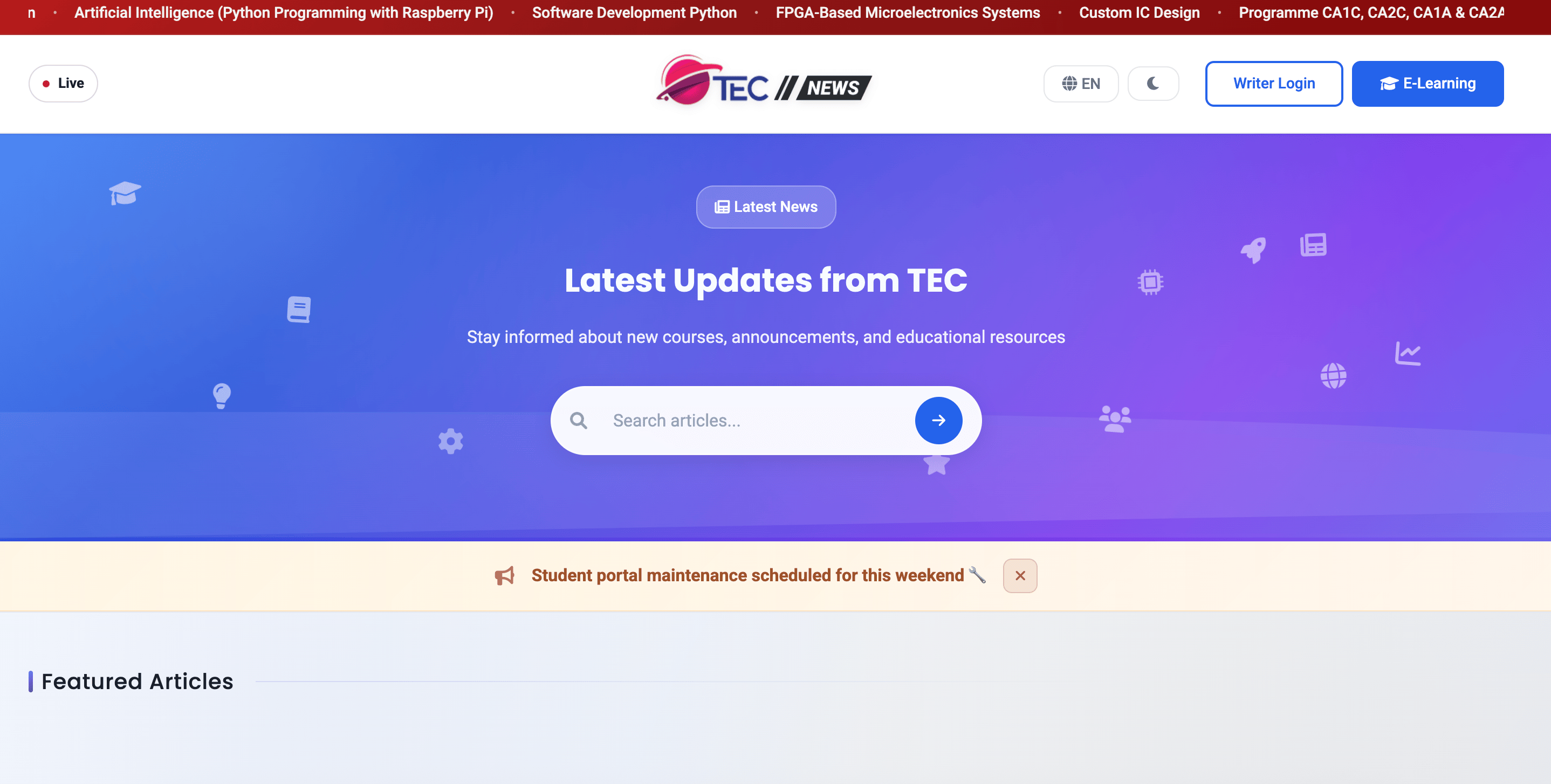Students
Courses
Employability
JPK 5 Star Accredited Center
Students
Courses
Employability
JPK 5 Star Accredited Center
Your Path to Success Starts with the Perfect Program.

Flexible training programs designed to meet immediate industry needs with guaranteed job placement.
Learn More
Financing support available for approved courses in technology and management with guaranteed job opportunities.
Learn More
Fundamentals of AI, machine learning, and deep learning with our hands-on course. Gain practical skills in AI model development, NLP, etc.
Learn MoreExplore a range of learning categories at TEC, from foundational telecom engineering to advanced wireless communication. Each program is designed to equip you with industry-relevant skills for a successful career.
Embark on an exciting path to a successful career in telecommunications with TEC. Join a community that values innovation, hands-on learning, and industry expertise.
Choose from a range of industry-focused programs designed to launch your career in telecommunications.
Provide your details to get started and stay updated on our latest programs, events, and opportunities at TEC.
Begin your journey at TEC with a simple admission process—step into a future of endless possibilities in career path.
Dive into hands-on learning and real-world projects that prepare you for a successful career.
Discover Your Perfect Program In Our Courses.
Learn from industry professionals dedicated to guiding you toward success.
Cultivate your skills and confidence through continuous learning and personal growth.
Experience flexible, interactive courses that allow you to study from anywhere.
Receive dedicated assistance and resources to help you secure internships and job placements.
Your Ticket to telco












Discover Your Perfect Program In Our Courses.

Get personalized guidance from our expert advisors and discover the perfect program that matches your career goals.

Stay updated with the latest news, industry insights, and company updates from TEC.
Visit News Portal →